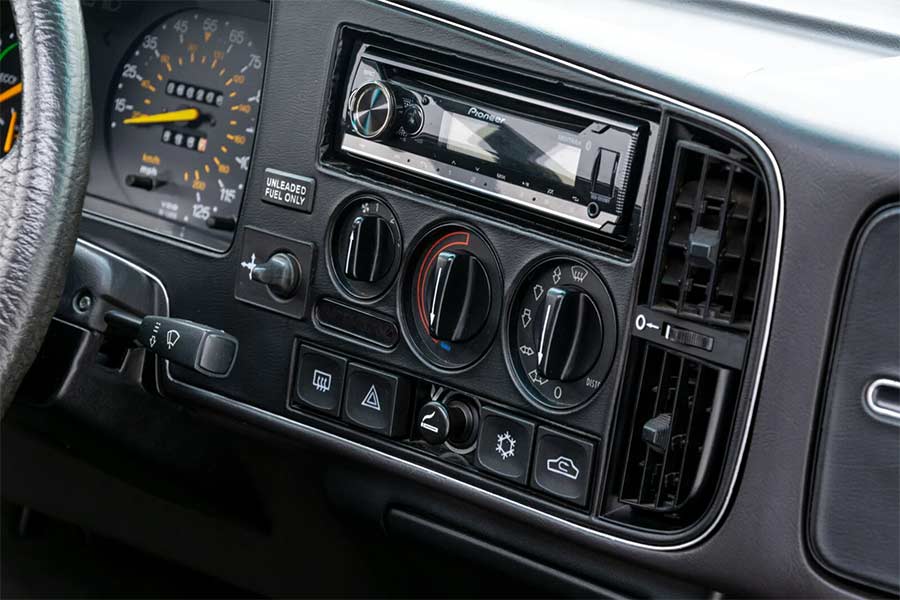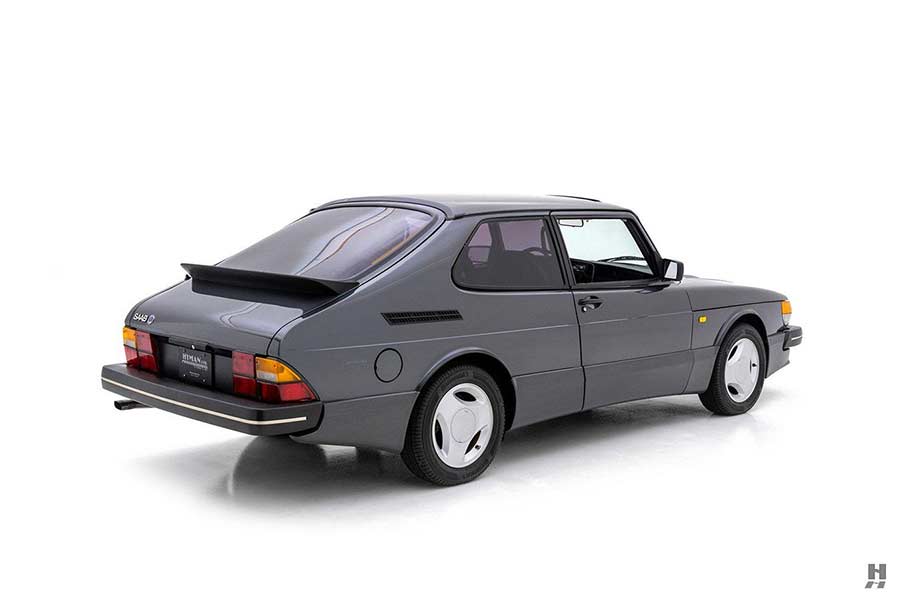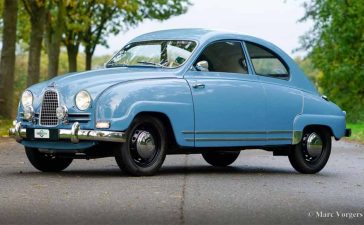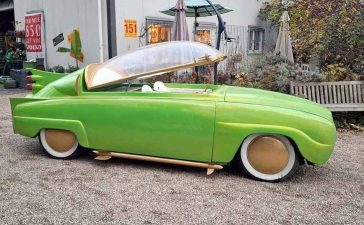Hagerty’s numbers confirm the SPG as the 900 Turbo benchmark
The Saab 900 Turbo has long held a special place in the collector car world, but Hagerty’s latest valuation report makes one fact impossible to ignore: the Special Performance Group (SPG) models now command a premium that dwarfs every other 900 Turbo variant. In October 2024, Hagerty pegged a #2 (“excellent”) condition SPG hatchback at $40,000, cementing it as the leader among late ’80s and early ’90s Saabs. That number reflects a meteoric rise that began in mid-2020, when these cars jumped from the mid-teens to the high $20Ks, plateaued briefly, and then surged again by late 2022 into the mid-$30K range.
For comparison, non-SPG hatchbacks sit at roughly $16,800, while the sedans average $13,400, and the convertibles have stabilized at around $21,000. The drop-top has overtaken both sedan and hatchback in desirability outside the SPG world, largely due to a mix of nostalgia and seasonal appeal. Still, neither comes close to the commanding position of the SPG, which has proven to be the definitive driver-focused 900 Turbo for serious collectors.

For context, the full Hagerty analysis can be read here, but the trend lines speak for themselves: the SPG is no longer a cult secret. It’s the Saab that investors and drivers alike now treat as a legitimate blue-chip asset.
Why the SPG sits atop the Saab 900 Turbo food chain
The SPG package, first offered in 1985, was Saab’s factory-sanctioned answer to the German performance sedans of the era. While the upgrades may sound modest on paper—five additional horsepower, retuned suspension with softer rear shocks, anti-sway bars front and rear, an aero kit to reduce drag, leather upholstery, and an electric sunroof—the cumulative effect was transformative. It became the 900 Turbo that delivered the sharpest handling, the most composed highway behavior, and the most cohesive visual identity, complete with the distinctive lower cladding and wheels that enthusiasts now treat as hallmarks of the model.

Beyond the package itself, the SPG’s limited production and survivor rate have driven its scarcity premium. Many of these cars were driven hard and left to wither through the 2000s, when values were low. The few that remain in top condition now sit in the garages of collectors who understand both their dynamic appeal and their place in Saab history.
For a deeper dive into Saab’s performance legacy, including the evolution of the SPG, check our previous feature on the most expensive 900 SPG ever sold in the U.S., which broke the $83,500 barrier earlier this year.

A collector market shaped by nostalgia and generational demand
The Hagerty data also underscores the generational story driving Saab values. Baby boomers account for 34.57% of Hagerty quotes on the 900 Turbo, reflecting their direct connection to these cars as symbols of career success in the late ’80s and early ’90s. Gen X buyers follow closely, drawn by both nostalgia and the SPG’s blend of performance and comfort. Millennials, while typically younger when these cars were new, also over-index compared to their overall collector market share, accounting for 25.68% of quotes.
This demand isn’t just about rarity—it’s about what the 900 Turbo represents. For boomers, it recalls a car that stood apart from the German crowd without sacrificing usability. For Gen X, it’s a reminder of aspirational parking lots at universities and corporate offices, rather than high school nostalgia. And for Millennials, it represents an alternative classic: a turbocharged, aircraft-inspired design that remains accessible compared to inflated Porsche and BMW prices.

Engineering quirks that still define the 900 Turbo experience
Part of the Saab 900 Turbo’s enduring appeal lies in its idiosyncratic engineering, which separates it from its European peers. Saab’s decision to mount the engine backwards, using chain-driven primary gears to send power to a transmission located beneath the engine, remains one of the most unique drivetrain layouts of the period. Add to that the front-wheel-drive layout, first-in-industry cabin air filter, and turbocharged Triumph-derived inline-four—initially producing 135 hp and later upgraded with a 16-valve head and intercooler to 160 hp and 188 lb-ft of torque—and you get a car that feels utterly distinct to drive.
The introduction of Saab’s Automatic Performance Control (APC) system in 1982, designed to regulate boost pressure and eliminate knock, was another innovation that allowed engineers to safely raise compression ratios and improve both efficiency and performance. By the 1987 facelift, the 900 Turbo had become a fully matured package, available as sedan, hatchback, and convertible, all benefitting from Saab’s obsessive approach to safety and drivability.
For a look at how Saab’s engineering philosophy extended beyond powertrains to features like the Night Panel instrument dimming system, revisit our Saab Night Panel deep dive.

What’s next for Saab 900 Turbo values?
Looking ahead, the $40K threshold for SPGs may just be the beginning. With several pristine examples selling for far higher (including the $83,500 record-setter earlier this year), the Hagerty data points to a broader market recalibration rather than a peak. Non-SPG 900 Turbos, particularly the convertibles, are likely to see modest appreciation as buyers priced out of SPGs pivot toward more attainable options. Sedans, historically undervalued, could follow if interest continues to broaden.
For enthusiasts and collectors, the advice is straightforward: if you’re eyeing a 900 Turbo, prioritize condition and documentation over chasing the SPG badge at any cost. These cars remain approachable to maintain for DIY owners, but neglected examples can quickly become money pits. Conversely, well-kept cars with service histories are proving to be safe bets both as drivers and as appreciating assets.
As Hagerty’s chart shows, the Saab 900 Turbo is no longer a quirky bargain—it’s an emerging classic with real financial traction. Whether you’re hunting for an SPG to headline your garage or a convertible to enjoy on summer weekends, the market is rewarding those who act decisively.












Hopefully with these valuations someone will be prompted to manufacture hard to find parts.
Same Hagerty isn’t as complimentary of the U.K. models 🤷♂️
they dont create the market they document it
indeed. An SPG is soaring past $40k in the States, meanwhile in the U.K. better models are still below £20k even though there’s form to the contrary.
probably because they’re more common over there and not as big of a deal. It’s like a Ford mustang it’s a dime a dozen over here but in Europe I’d imagine they fetch a much higher price.
I am very happy with my 900 GT Aero, which is the European version of the Commemorative Edition. What a car!
Sorry but i will NEVER pay 40k$ for this car.
I wonder what my black manual Aero 9000 is worth.
So I guess a my Turbo 16s convertible sitting in a garage for nearly a decade now might have been a good investment 😉
Lovely Cars, mine is a not a real SPG but have all the options and I love to use it in summertime without any doubts 😊
Highly innovative. But rwd would’ve been more fun
Gave mine away a couple of years ago. 1987 model (but have a 2007 Convertible, AERO still!)
Fabulous cars, lots of fun to drive – way better than most people believe. The convertibles and SPGs are gorgeous.